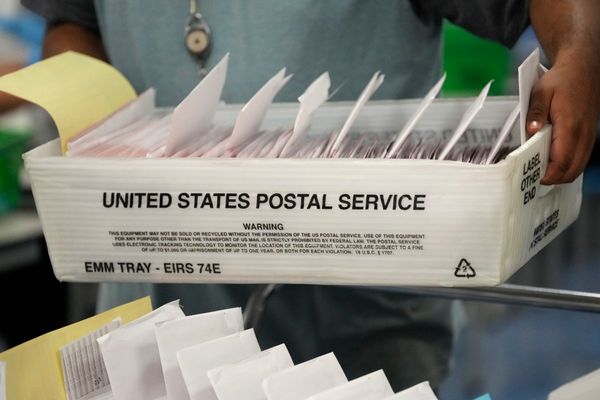“I have lived here for over two decades. It does not feel like home anymore. There are hookah bars and pubs, which were predominantly found in the Central Business District (CBD), doing business here now. There sure were advantages when we got branded shops and other facilities, but seeing a hookah shop opposite a college and a hospital really makes one question if commercialisation really means development,” rued Syona Thomas, a resident of New BEL Road.
Amidst the ongoing debate over the demand from retail business owners and hoteliers in the city to make Bengaluru a 24/7 open city, and concerns expressed over this from law enforcement agencies, residents in areas that have seen a boom in commercial activities — both old and new ones — are bracing for the worst. While the industry argues that keeping businesses open throughout the day will help them cater to the huge population with a diverse job profile, many resident welfare associations, especially from localities like Koramangala and Indiranagar, which have been living with the ill-effects of illegal commercialisation, have opposed the idea, pointing out that it would adversely affect the residents.
Earlier, Bengaluru had pubs, bars, and malls in specific locations, especially in and around the areas in the CBD. Along the way, as the borders of the city expanded, widescale commercialisation spread to many other localities which once were mostly residential.
While a section agrees that there are certain benefits, like not having to travel much to access commercial outlets and restaurants, most of them complained about how their localities have become unrecognisable in the last few years. This has increasingly become true of localities beyond Indiranagar, Koramangala and Jayanagar, where the tussle between residents and the industry has been going on since many years.
Residents in these areas complain about increased cost of living, rampant traffic, loud noises from pubs and unruly parking. For instance, at Kammanahalli, commercialisation gave rise to an exponential rise in liquor shops and bars and breweries. “The boom took place ten years ago and the last five years saw a rise in retail outlets, breweries and restaurants. Earlier, the area had minimal access to stores and it was a perfect residential area. Now, there is noise pollution and horrible traffic,” said Ashwini, a resident.
In the neighbouring area of Banaswadi, high-rise buildings have cropped up in residential areas with no proper parking facilities, residents say. Subbaiah C.M., a social worker from Kalyan Nagar, claimed that for about 2 km from CMR road, there are commercial buildings which were built against rules.
“The buildings had sanctioned plans to let out parking spaces on their own premises, but it has been let out for commercial purposes, and that causes huge inconvenience to the residents in terms of using pavements and traffic on roads. Apart from this, the vacant sites are being used as landfills by everyone, which is again risky and causes nuisance for people living in the area,” he complained.
At Sarjapur and Electronics City, development was absolutely essential a few years ago, but now people say that commercialisation with no access to basic civic facilities like good roads and drinking water have only made things worse for them. With many schools and IT parks opening in the localities, traffic congestion is an undeniable everyday problem.
“Yes, our area is all developed now. But a lot of it comes at a cost. Despite the commercial spaces, the infrastructure, especially the roads, are not good enough. This has led to more traffic and congestion. Perhaps better planning can help avoid the chaos,” said Dhanya Raghunath, a resident of Sarjapur-Haralur road, who has been living in the area for the past 16 years.
Those in the northern parts of the city credit the commercialisation to the influx of students and corporate workers who prefer to stay near the international airport. “We did not have much around this area some years ago. But with new people settling here, demand grew for things which were available in Hebbal. First, it started with a bunch of coffee shops targeting a group of youngsters and ended with around ten pubs/ restobars on the main road. Most of these sprang up after coworking spaces came to our area,” said Arjun Achar, a resident of Sahakarnagar, explaining the changes in the area in the last few years.
On New BEL Road, most commercial establishments were started to woo the students in a popular college in the area. There are also other areas like Whitefield, Bellandur, Hebbal, HSR Layout, J.P. Nagar and Banashankari that have been hit by the wave of commercialisation. Residents have simple demands from the government and local leaders — keep a check on illegal commercialisation, and provide the necessary infrastructure before commercialising the areas in the name of development.
Problem lies in planning
Experts and citizen activists say that commercialisation is unavoidable and by itself, it is not problematic either as it has only been induced by prolific development in the areas. However, they credit poor or no planning and unregulated development at places where the underlying infrastructure does not have the capacity to sustain the development as the root causes of inconvenience to the public. Lack of coordination further contributes to the problems.
“If residents go in one direction, commercial establishment owners go in the other. The government runs in a totally opposite direction, which does not help at all in the peaceful coexistence of residences and commercial establishments. There is macro-planning, but those involved in planning should go down to the micro-level and visit each ward. An officer sitting at the BDA office cannot decide if a 30 feet road in Chickpet should be a commercial road and a 40 feet road in another locality should be a residential road,” said Vijayan Menon of the Citizens Action Forum.
The experts also suggest analysing the natural as well as infrastructural capacities of localities and consultation of those living in the areas before bringing in commercial development as some of the measures to tackle these problems.
“Value capture mechanisms should be used to implement area improvements, basic services provision and enable public goods, well-provisioned open spaces, sidewalks, complete streets, etc. The local areas plans should be developed by taking into context local specificities and built-in flexibility for future growth and development of these nodes. Master plans should take into account the local area plans and vice versa,” said Jaya Dhindaw, Programme Director – Integrated Urban Development, Planning and resilience, WRI India.
Dr. A.S. Balasundar, Chief Health Officer, BBMP, said the civic body had not violated the High Court order, which stated that in residential areas, commercial licences should not be issued to open establishments on roads which are less than 40 feet in width, since 2015.
“However, the court has no direction about the establishments which had got licences before 2015. Areas like Electronics City were all under panchayath limits back then and had obtained their licences. In old areas like Malleswaram, some roads are small and some large, but back then commercial establishments had opened up on smaller roads too and it is difficult to enforce the rules there,” he said.
“This year, the new Comprehensive Development Plan is being revised and a lot of changes will also come up as we now primarily work under the BBMP Act 2020. Some residential areas which are heavily commercialised, might be declared as commercial zones only,” he added.
(With inputs from Thrisha Sajeev, Samhitha B.S. and Archita Lakhotia)







